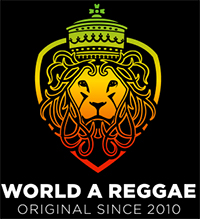Review by David Katz
In the midst of an extended run that has seen packed houses singing along with the cast every night of the week for the past five months, Get Up, Stand Up! The Bob Marley Musical is a resounding commercial success with plenty of nice visual and audible touches.
This high-energy production keeps the action briskly zipping along and the innovative set design helps to fill our eyes, ears, and minds with background context. It is an uplifting celebration of one of the world’s most iconic figures with plenty of poignant moments, though if you know the tale, you will need to forgive the script playing fast and loose with the facts, artistic license allowing for gaps in the story and abundant inaccuracies. Nevertheless, the musical makes for an enjoyable ride that inevitably has the packed house on its feet by the end of the night.
The brief introduction begins with a deejay on the sidelines directly engaging the audience to test their knowledge of patois—a bit hammy, but all in good fun and reminding that the experience is interactive; no sense in politely clapping in your seat during the event.
Then the main stage illuminates for a sound system deejay to blast roots reggae through massive speaker columns, again letting us know that we are not in the usual staid West End theatre environment; instead, we have come to rock to the rhythm, blowing our neighbours to full watts tonight.

Soon the whole of the cast is grooving to ‘Lively Up Yourself,’ and the feeling is infectious. The reggae sounds sweet, feels good, and already lifts the mood, as the stresses of the day ease away. Soon we see the young Bob being sent away to Kingston by his mother, who cannot afford his upkeep in the countryside; instead of meeting his father in Kingston, he is made to be a drudge by an anonymous woman, until his mother finally finds him again, and brings him to Trench Town; the initial meeting with
Bunny Wailer and Peter Tosh isn’t quite what it should be, and although lead man Michael Duke is fairly plausible as Marley, it must be said that Tosh and Wailer are given short shrift, leaving actors Natey Jones and Jacade Simpson under-represented.
With the entry of Gabrielle Brooks as Rita Marley, things take a definite turn for the better. An obviously gifted vocalist who nearly steals the show in several of the most moving scenes, Brooks injects a key portion of female energy, though using ‘Could You Be Loved’ as the courtship song between Bob and Rita seems terribly out of place.

By the time the Wailers audition for Coxsone Dodd at Studio One in the ska years, the script has them singing ‘Trench Town Rock’ and ‘Stir It Up,’ non-sequiturs from years later that grate and Dodd is portrayed as a cartoon villain who draws a gun and fires it, the exaggerated caricature a weak point. The chronology is further confused when the three Wailers confront an RJR radio announcer, forcing him to play ‘Small Axe,’ rather than one of their own productions, but no matter, the radio booth is another great piece of set design and we’re soon back on track with fine renditions of ‘Concrete Jungle’ and ‘Talking Blues.’
After meeting Chris Blackwell in London (another character not sufficiently developed here) and touring under poor conditions despite having signed to Island, Tosh and Wailer go their separate ways and Rita introduces Bob to the I-Threes, and the arrival of Cindy Brakespeare to ‘Turn Your Lights Down Low’ works well enough, and so does ‘Three O’Clock Roadblock,’ through the notion that cops roughed up Marley seems like stretching things a bit.
The assassination attempt is another well-executed scene (despite the inclusion of Marcia Griffiths, who had left the island on a pretext before the event) and there are nice renditions of ‘War’ and ‘Jamming,’ before the curtain rises for intermission. Wow… that was quick, with never a dull moment!

Act two begins with ‘Exodus,’ with the cast looking fit and sounding great, the live bass and drums adding to the realism. ‘Waiting In Vain’ gives us more of the Cindy side story, and there’s a hilarious scene where Lee ‘Scratch’ Perry, portrayed with zest by Daniel Bailey, gives a convoluted rant that leads to ‘Punky Reggae Party’ before a backdrop of pogoing punks and skanking dreads in London, though the mosaic cap is at least a decade early, since Perry never wore them until the late 1980s.
‘Running Away’ forms a bridge to the approach by gunmen Bucky Marshall and Claudie Massop (though points off for repeating the myth that they ‘met in prison’), and after the resultant One Love Peace Concert, with decent Manley and Seaga stand-ins, ‘No Woman No Cry’ is used as a vehicle for Bob’s mistreatment of Rita, who again is here on fine vocal form, with commanding vibrato.

When the melanoma catches up with Bob, we get a fittingly unadorned ‘Redemption Song,’ and after the inevitable ‘One Love,’ we end on a better note with an up-tempo ‘Could You Be Loved’ that leads to a full-throttle ‘Get Up, Stand Up’ climax with the entire cast, reminding that reggae is the music of liberation and Marley the standard-bearer.
Get Up, Stand Up! The Bob Marley Musical will run nightly until January 2023, and is well worth taking in for any Marley fan, or even just for lovers of musicals. Clint Dyer’s sympathetic direction, an outstanding set design, an estimable ensemble cast, and fine performances by Michael Duke, Gabrielle Brooks and Daniel Bailey all work together to deliver a fine evening out.
By David Katz

